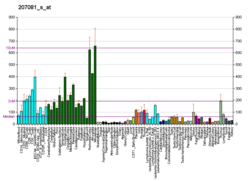| PI4KA | |||||||||||||||||||||||||||||||||||||||||||||||||||
|---|---|---|---|---|---|---|---|---|---|---|---|---|---|---|---|---|---|---|---|---|---|---|---|---|---|---|---|---|---|---|---|---|---|---|---|---|---|---|---|---|---|---|---|---|---|---|---|---|---|---|---|
| Identifiers | |||||||||||||||||||||||||||||||||||||||||||||||||||
| Aliases | PI4KA , PI4K-ALPHA, PIK4CA, pi4K230, PMGYCHA, phosphatidylinositol 4-kinase alpha, SPG84, GIDID2 | ||||||||||||||||||||||||||||||||||||||||||||||||||
| External IDs | OMIM: 600286; MGI: 2448506; HomoloGene: 11171; GeneCards: PI4KA; OMA:PI4KA - orthologs | ||||||||||||||||||||||||||||||||||||||||||||||||||
| |||||||||||||||||||||||||||||||||||||||||||||||||||
| |||||||||||||||||||||||||||||||||||||||||||||||||||
| |||||||||||||||||||||||||||||||||||||||||||||||||||
| |||||||||||||||||||||||||||||||||||||||||||||||||||
| |||||||||||||||||||||||||||||||||||||||||||||||||||
| Wikidata | |||||||||||||||||||||||||||||||||||||||||||||||||||
| |||||||||||||||||||||||||||||||||||||||||||||||||||
Phosphatidylinositol 4-kinase alpha is an enzyme that in humans is encoded by the PI4KA gene. [5] [6] [7]





